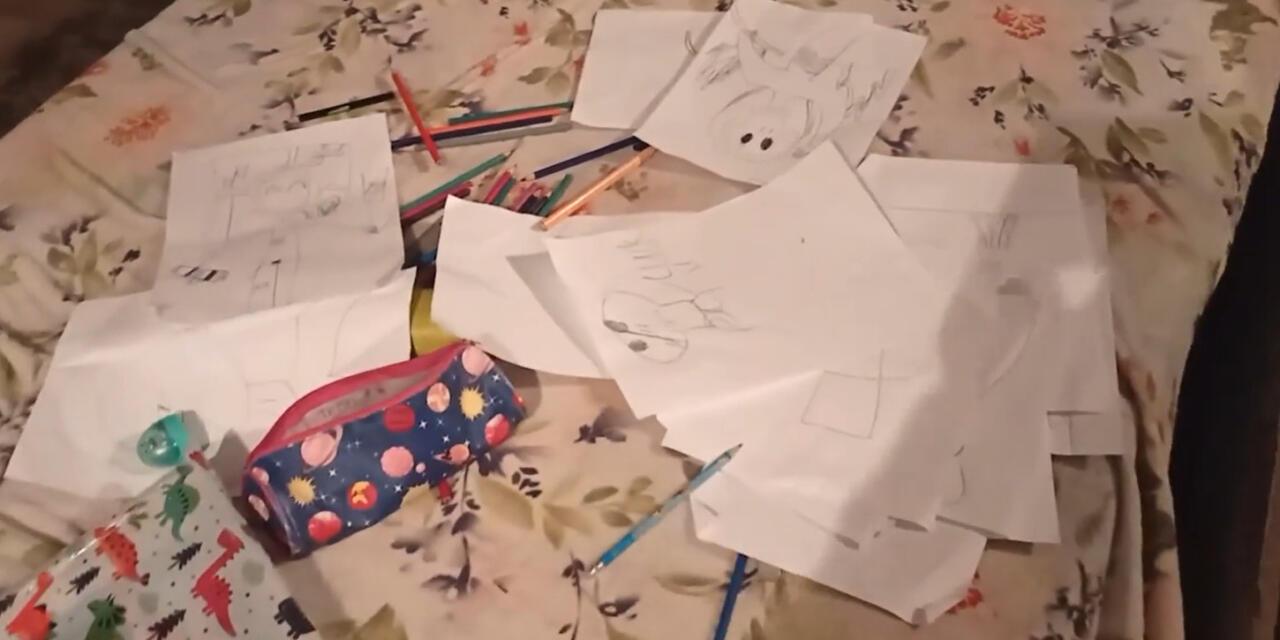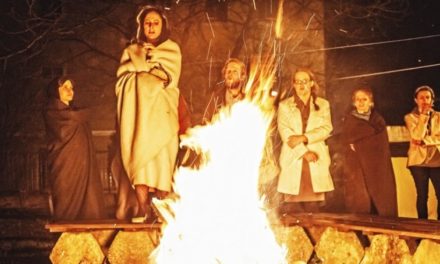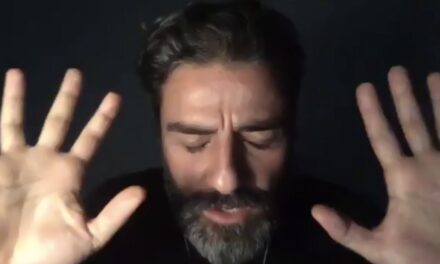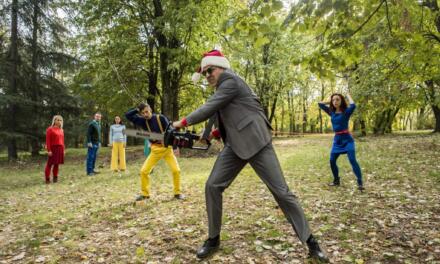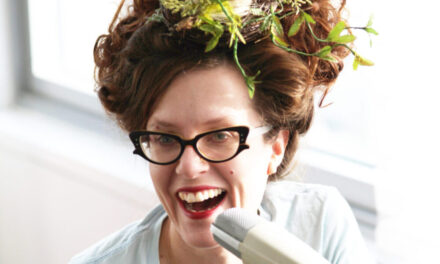When we think “theatre” today, an image of the Donetsk Academic Regional Drama Theatre in Mariupol shattered by missiles flashes before our eyes, with ДЕТИ written in enormous letters outside the building. An image of a theatre-shelter which has not been spared by the atrocity of Putin’s war. Then, we see images of the stage and auditorium of the Maria Zankovetska Dramatic Theatre in Lviv turned into a refugee home. Next, there are images from Polish theatres where people who have escaped violence now live and where intensive action for real help to Ukraine is taking place.
Kiedy dziś myślimy „teatr”, przed naszymi oczami najpierw zjawia się obraz roztrzaskanego pociskami rakietowymi Donieckiego Regionalnego Teatru Dramatycznego w Mariupolu, z ogromnym napisem ДЕТИ na placu przed budynkiem. Obraz teatru-schronu, którego nie oszczędziło bestialstwo wywołanej przez Putina wojny. Zaraz potem widzimy obrazy sceny i widowni Teatru Dramatycznego im. Marii Zańkoweckiej we Lwowie zamienionego w dom uchodźczy. A następnie obrazy z polskich teatrów, w których zamieszkali ludzie uciekający przed przemocą i w których trwa intensywna praca na rzecz realnej pomocy Ukrainie.
Коли сьогодні думаємо про «театр», перед нашими очами, перш за все, з’являється образ зруйнованого ракетними ударами Донецького академічного обласного драматичного театру в Маріуполі, з величезним написом «ДІТИ» на площі перед будинком. Образ театру-сховища, якого не помилувала жорстокість війни, яку розв’язав Путін. Одразу за цим бачимо образ сцени і глядацького залу Національного академічного драматичного театру імені Марії Заньковецької у Львові, який замінили на будинок для вимушених переселенців. А далі образ з польських театрів, де живуть люди, які втікають від насилля, і де триває інтенсивна праця, щоб реально допомогти Україні.
Theatre in Poland has responded holistically and multilingually to the Russian invasion of Ukraine. From the symbolism of the message above to theatres creating special posts to host Ukrainian artists, Facebook group advertising opportunities “Praca w teatrze dla osób z Ukrainy | Праця в театрі для осіб з України,” through running workshops for children and adults, to becoming a temporary home. Many Polish theatres painted «ДІТИ» (Children) in front of their doors, ghosting (as Marvin Carlson would say) the crime on the theatre in Маріу́поль/Mariupol, and the people it protected. In the March performances of 3Siostry (3Strs) by TR Warszawa and the Stary Teatr in Kraków/Cracow, Natasha was played by Ukrainian Оксана Черкашина (in Polish Oksana Czerkaszyna; in English Oksana Cherkashyna) rather than Marta Ojrzyńska as planned. The two actors play the part interchangeably in the production based on Антон Чехов or Anton Chekhov’s Три сeстры́ directed by Belgian Luk Perceval. Cherkashyna’s Natasha is Ukrainian and speaks Ukrainian. Perceval also decided to change Москва/Moscow – in 3Siostry, the symbol of time, youth that the sisters long for but cannot get back – to Київ/Kyiv. Shifting the power structure of the play, he also referenced the experience of Ukrainian refugees losing homes.
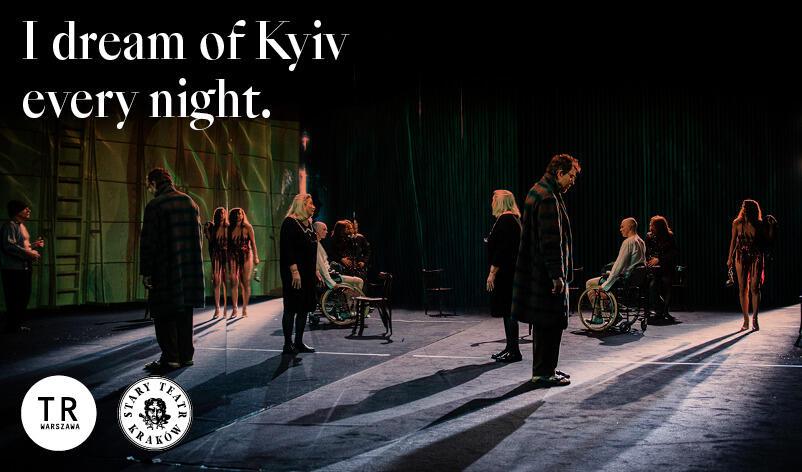
3Siostry. Dir. by Luk Perceval. Photo by Monika Stolarska.
Recently, much attention has been given to the ProEnglish Theatre in Kyiv. And I want to focus on theatre in Ukrainian and Russian performed by artists in shelters and as a spiritual shelter (*1) for their audiences, for children in particular.
#ANIMAARTFORPEACE
The project was launched on March 1st 2022 by students and lecturers of puppetry and animation at the Харківський національний університет мистецтв ім. І. П. Котляревського/Kotlyarevsky Kharkiv National University of Arts with the following bilingual manifesto:
Ми, лялькарі, митці, художники, автори з Харкова і всієї України запускаємо артистичний флеш-моб «Art for peace!».
Нам зараз важко, але ми не втрачаємо сили духу і віри в те, що мистецтво може зупинити війну.
Ми готові малювати, писати, танцювати, сидячи в укриттях, ми готові підіймати настрій і бойовий дух, ми готові створювати, поки довкола руйнування.
Ми закликаємо підтримати нас. Створюйте коротке відео з перформансом, інсталяцією, малюнком, танцем чи поезією.
Єднаймося творчістю заради миру!
We, puppeteers, artists, painters, authors from Kharkiv and all over Ukraine are launching an artistic flash mob “Art for peace!”.
It is difficult time for us now, but we don’t lose the strength of spirit and faith that art can stop the war.
We are ready to draw, write, dance while we are sitting in a shelters, we are ready to lift the mood and fighting spirit, we are ready to create while around destruction.
We urge you to support us. Create a short video with a performance, installation, drawing, dance, poetry or something else that inspires, motivates and calls for peace.
Let’s unite with creativity for the peace!
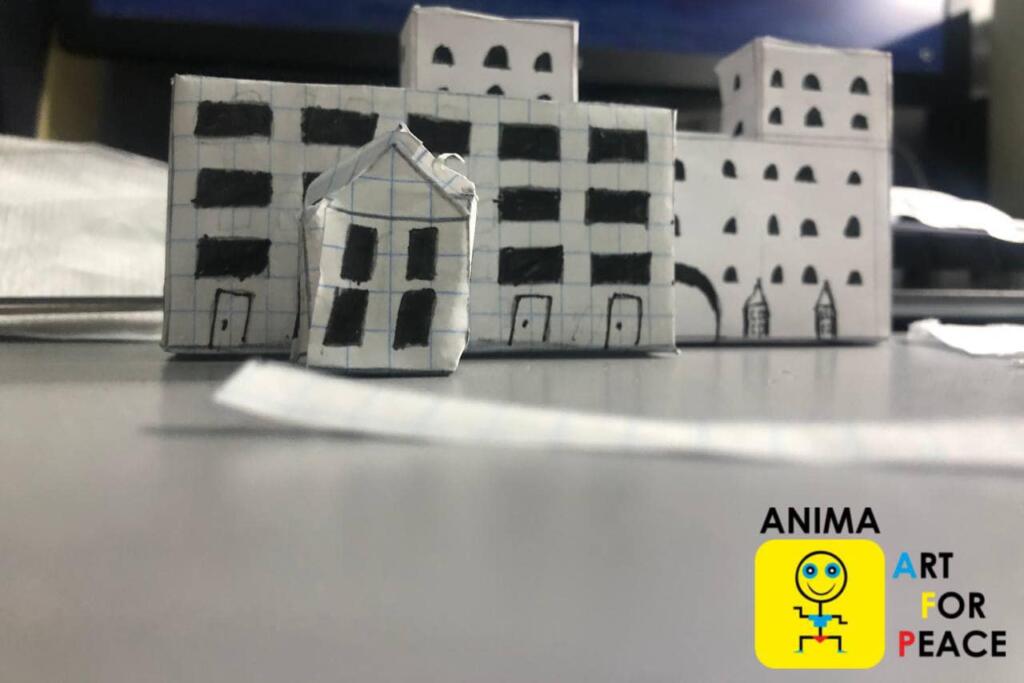
This is an image of a house made by a student from ANIMA Art for Peace and his 10-year old brother – Бальков Вадим та Антон/ Wadym and Anton Balkowy – before they escaped Kharkiv/Ха́рків.
Юлія Білинська/ Yuliia Bilynska in her powerful lecture “Kharkiv: the city of freedom” delivered from Kharkiv/Ха́рків at Canterbury Christ Church University, spoke how the direct reason for ANIMA Art for peace was crying terrified children in shelters. Children needed art to forget for a second why they are in shelters. By trying to provide an escape for children, the artists discovered they needed art too. Their works created in basements, during shelling and bombing builds on the university’s and its ANIMA project unique interests in transmedia aspects of puppetry. These are some examples:
- Meditation by Валерія Золотарьова / Valeria Zolotareva
- Молитва за Україну/Pray for Ukraine by Оніщук Анастасія/Anastasiya Onishchuk, Марініч Ангеліна/Angelina Marynych, Полякова Елизавета/Elyzaveta Polyakova
- Anima art for peace, 28.02.2022 at 16.22 by Валерія 18 років / Valeria (18 y.o) студентка першого курсу / first-year student Department of Acting and Directing of Animation Theatre, Kharkiv I. P. Kotlyarevsky National University of Art
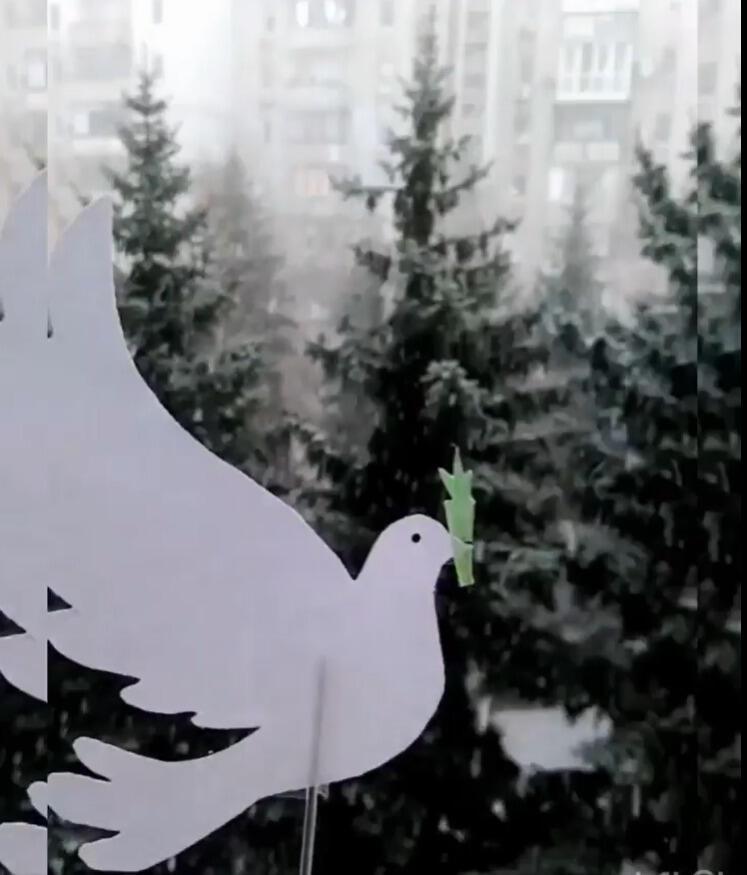
Screenshot. Молитва за Україну/Pray for Ukraine by Оніщук Анастасія/Anastasiya Onishchuk, Марініч Ангеліна/Angelina Marynych, Полякова Елизавета/Elyzaveta Polyakova.
Voices for Ukraine
Voices for Ukraine is a transcultural collaboration facilitated by European Theatre Convention, the largest network of publicly-funded theatres in Europe. It started at the beginning of March 2022 and came together with a call for international collaborations with artists from Ukraine.
Voices for Ukraine is a platform for artists in Ukraine to respond to the invasion through art, reflections, and diaries. The creative process happens on the streets, in bomb shelters, and in hideouts.
Софія Баскакова/Sofia Baskakova from Центр Сучасного Мистецтва «ДАХ»/Centre for Contemporary Art “DAH”
In their recent manifesto, the FutureStage Research Group at Harvard metaLAB said: “Performance is a human right,” and they made particular case for children’s right to experience performance. They argued that theatre spaces can serve “as connective tissue between the intramural and the extramural, among the past, present, and future, between the on-site and the online.”
ANIMA Art for Peace and Voices for Ukraine are the embodiment of this manifesto. Their theatre in shelters and as a shelter also speaks powerfully to the idea of theatre as ambulatory care. However, above all, it is a performance of community for whom art is the key source and stage for resilience, for belief, and for survival. It is not just connective tissue. It is epithelial tissue, muscle tissue, and nervous tissue. It is (for) every-body.
*(1): Dramatyczny Kolektyw also uses the idea of theatre as a shelter, although in a different context and my interpretation was independent.
This post was written by the author in their personal capacity.The opinions expressed in this article are the author’s own and do not reflect the view of The Theatre Times, their staff or collaborators.
This post was written by Kasia Lech.
The views expressed here belong to the author and do not necessarily reflect our views and opinions.

